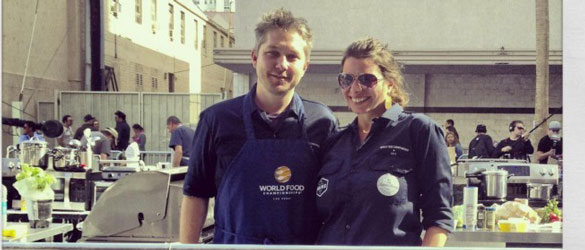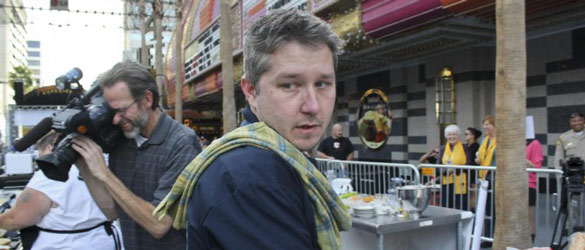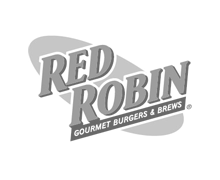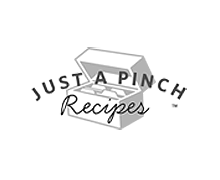As I reflect on my experience at the 2013 World Food Championships, it’s hard to believe that at this time almost one year ago, my biggest concern was weighing the relative merits of “having a drink at the Flamingo” versus “having a drink at the Paris,” following our failure to advance past round two in the 2013 World Food Championships.
Las Vegas is so very far away, in terms of both geography and attitude. Though I’d visited several times before, it had never been with any kind of purpose, and it had never been with my wife, Jillian. Trips in my twenties resulted in a kind of three day rolling hangover so severe that they left my hands shaking and my brain unable to process information, skin chapped and blistered from the desert heat and the bourbon, bank account completely emptied into the hands of elderly Asian croupiers and the waistbands of scantily-clad go-go dancers. I had no idea what to expect from a trip to Las Vegas as a so-called adult, one with a wife, a daughter, and, lest we forget, a cooking competition to win.
A 5:50AM flight from Portland landed us in Las Vegas at 11:30AM. We had no hotel reservations; I watched hotel rates go completely out-of-control in response to our event, as well as some sort of car show that was in town and was, from what I could gather from a passing guest, mostly focused on trailer hitch pins.
As we were getting off the plane at 11:55AM, I began checking my hotel booking app, to find a place to stay. Rates were still crazy, even at the skeeziest hotels in town. We settled on two nights at The Stratosphere, a 1990s-era hotel which straddles the line between the polished presentation and glitz of the strip, and the numerous taquerias and llanterias that seem to make up the bulk of the city.
After circling the airport terminal a few times for no reason in a confused haze, we settled into our rented silver 2013 Dodge Charger and made our way straight from the airport to the local Whole Foods, where we had phoned in an order to the meat department for last minute ingredients, and a rack of prepackaged sushi for lunch. PROTIP!: If you have never enjoyed tuna sashimi while driving a rental car, now’s not the time to start.
Next, we made a quick stop at our hotel to check in. The Stratosphere may not be much, but to my pleasant surprise, it was actually a lot slicker than a lot of hotels I have stayed in Las Vegas in the same price class, with large rooms and an inviting casino. Our fourth floor view looked out only on the concrete side of the adjoining building, but we reminded ourselves that if you’re in your hotel room in Las Vegas, you’re doing it wrong.

After quickly dropping off our stuff, we went straight to “Downtown Vegas” (another area I had never visited) for the mandatory on-site registration for the competition
When we arrived on Fremont Street, the three or four block stretch of “Old Vegas” that has been closed off to traffic, covered in The World’s Largest LCD Display, and populated with a wide array of schizophrenic vagrants, street performers dressed up as Batman, and schizophrenic vagrant street performers dressed up as Batman, there was very little to go on; though it was hard to miss the “Kitchen Colosseum” (sponsored by Kenmore), there wasn’t much of a suggestion about what to do next. Another competitor pointed us toward “The D” hotel, where we took the elevator to the 14th floor conference rooms.
There was an explosion of activity upstairs, and we felt the huge scale of the event for the first time: Hundreds of cardboard boxes stacked lining the walls, tables full of smartly-dressed professionals typing manically into smartphones, young interns racing around and barking into handheld radios. We were steered first toward a registration table to pick up our informational packets and wristbands, as well as a swag bag full of things like coupons for butter, half-price drink tickets, promotional cookbooks, bottle openers, and tiny toy cows. We posed for our “team photo,” dropped off our ingredients at the outdoor walk-in refrigerator for storage overnight, and were set free to wander and rest for the evening.
It was a much different scene on competition day. Kenmore’s “Kitchen Coliseum,” thirty complete outdoor cooking stations, were arranged in two rows of gleaming stainless steel appliances on a side street. Each workstation was humming with other competitors, already completely engaged in the “Bacon” category of the competition, which was blanketing the entire area with the comforting scent of frying meat. While the first competition of the day was already in full swing, other cooks were still arriving, some dragging giant coolers full of ingredients, or multiple suitcases packed to overflowing with cookware and utensils. We were amazed at the professional level of competition; instead of a group of food blogging amateurs like ourselves, whole teams were showing up in matching customized kitchen scrubs, real chefs who do the things we only talk about, like “owning restaurants” and “running food trucks.” We were awed by the level of competition, as we stood waiting with our cardboard box of ingredients from Whole Foods, the $12 dollar kitchen knife we had brought, and the cheap aluminum pressure cooker that had miraculously made it through airport security without attracting any attention.
Our equipment may not have been much, but we were otherwise feeling pretty spiffy, dressed in matching blue Dickies work shirts, printed with the logo from our blog, FromAway.com. Having a uniform does wonders for the psyche; I understand now why older couples wear matching tracksuits when they go on vacation to Orlando. We weren’t exactly calm, but we felt like we had a game plan for what we were going to cook, for who was going to do what, and in which order.
Before the competition was set to begin, we had to visit “The Pantry,” a U.S. Foods-provided courtesy that was supposed to provide some of the basic ingredients we would need to compete, like cooking oil, sugar, salt, and butter. After some difficulty finding the order we had faxed in days earlier, the staff did their best to ensure every chef got what they had ordered, and did so with kindness and enthusiasm. It was just one example of the “we’re all in this together” attitude that was on display both among the competitors and most of the event organizers, and it made everyone feel at ease.
The Cooks’ Meeting was an informal affair, held standing up just before competition to go over the rules one last time. For the first round, a bell would ring, indicating that it was time to begin cooking. We would have an hour and fifteen minutes to cook our first sandwich, which Communications Director Jeff joked (?) was “at least an hour more than anyone would need” to make a sandwich. At the 1:15 mark, the “Turn-In Window” would open, and we would have ten minutes to get our sandwiches finished, divided into tasting portions, plated, and turned into the judges. After that, we would clean our cooking stations and then, immediately launch into round two, where we would have 45 minutes to cook a grilled cheese sandwich, before the second turn-in window for judging.
We were pointed to our cook station, Number 19, and began to set up our ingredients and equipment, which included several mixing bowls, a whisk and a spatula, a microwave, food processor, blender, outdoor grill, and an electric stove, all plugged into power strips fed from a central electrical cable running through the center of the competition area. A crowd began to gather around the outer perimeter set up around the Kitchen Coliseum, and a giant black boom-mounted camera swung back and forth overhead, filming the competitors as we were setting up to compete After a few minutes of setup time, the bell rang without warning, signaling the start of round one.
Because we had been practicing our recipe in the week leading up to the actual competition, Jillian and I had a sense of what our weak points were, and had already discussed the exact steps that would need to happen, and in which order, the moment the bell rang. For Round One of the competition, dubbed the “Signature” round, we were free to present any sandwich we’d like, any combination that we felt would showcase who we were as cooks.
For our “Signature Sandwich,” we decided to present a sandwich featuring one of my favorite sandwich ingredients: Tender, slow-braised meat. We decided to do a version of a Mexican torta, a meal-on-a-bun that combines typical taqueria ingredients on a roll, instead of in a tortilla. Not content to work with typical Mexican flavors, we wanted to bring more of a Yucatecan influence to the sandwich, with the sour orange, achiote, and habanero flavors typical of the region. We called our finished sandwich the “Torta Yucateca,” which started with a layer of homemade refried bean spread, followed by tender pork shoulder carnitas flavored with orange, lime, pineapple, ancho chile, and achiote, topped with quick-pickled red onions with habanero, and a quick guacamole spread.
If that sounds like a lot of cooking to accomplish in an hour and fifteen minutes, that’s because it kind of is. Traditional recipes for cochinita pibil call for several hours of cooking time, and concentrating these flavors and techniques into such a short cooking window would be challenging. It was another strategic choice; I thought that if I could find a way to reduce a cooking process from 2-3 hours (the typical time it takes to get meat to fall-apart tenderness using a slow braise) down to the 75 minutes we had for round one, the sheer ambition of the project would be enough to score me a few extra points with the judges. Of course, it was also an incredible risk; if my pork didn’t turn out the way I’d planned, there would be no time to course-correct or start over.
Still uncertain of how to get my pork cooked quickly, I experimented before the competition with a $20 pressure cooker that I had found at a discount store. The first time I used it, I was a little confused about what I should be looking for. The recipes I reviewed for working with a pressure cooker all talked about what pressure to cook at, and for how long; my old-school cooker had no gauges or information about what was going on inside. Instead, you tossed in your ingredients, locked the lid, and then adjusted the heat as needed to keep the valve on the top of the lid gently rocking back and forth, releasing just the right amount of steam. Too little rocking, and you’re either not cooking hot enough to get done in time, or are cooking so hot that you run the risk of evaporating all of your liquid and burning what’s inside. And there would be no way to know, until the cooking time was finished and the lid was removed.
During my trial run, I was astonished by the results the cooker turned out. After just 20 minutes of cooking under pressure, I had a tender, succulent pork shoulder that was as good as any I have cooked more slowly in a traditional braise. Our at-home time trials for the sandwich proved that we could get the entire thing made, from scratch, in about an hour, leaving us plenty of time in the actual competition for plating. Or so we thought.
DING! Round one of the competition began, with a giant red LCD clock counting down the time. Jillian and I knew that the two most important (and potentially problematic) parts of making our “Torta Yucateca” were in the pickling of the onions, since they would need to sit for at least a half an hour before serving, and the pork carnitas, since this would only be my second time using a pressure cooker ever in my life, and the potential for disaster was high. Jillian had done an incredible job setting up our workstation; knives were laid out, and ingredients were grouped by task.
The first (of many!) unexpected hiccups was that our workstation had no running water To get water, we would have to sprint across the competition space to the dishwashing station, fill a pot, and then race it back. Jillian immediately ran off to find water to blanch our sliced red onions, while I started assembling the ingredients in the pressure cooker for my carnitas, which would have to sear and brown before actual pressure cooking could begin. As I chopped my gorgeous pork shoulder into chunks, and Jillian sliced onions and minced habaneros, we also were conducting the first of our on-camera segments, for the reality show that was filming about the event. Former “Top Chef” contestant Tiffany Derry was serving as emcee for the event, walking between the tables and asking each of the competitors about what they were doing. She was surprised to hear we were attempting carnitas during such a short cooking time, and we found ourselves immediately speaking in reality tv-friendly sound bites of the, “I”m not here to make friends, I’m here to make sandwiches” variety.
Though the cameras could be a little distracting, particularly as the producers asked you to repeat phrases or techniques that they found particularly juicy or ready to be woven into the inevitable storylines that would make up the show, I should stress what a tremendous amount of FUN this part of the process was. Jillian and I have been writing about food for our website for a long time, and certainly consuming more than our fair share of food-based television programming; to suddenly be occupying that world, while trying to still cook at least somewhat skillfully, presented a tremendous rush of adrenaline. It’s exciting, this TV stuff, and we were having an absolute blast being a part of it.

With the pickled onions pickling and the carnitas pressure-cooking, we turned our attention to the semi-homemade refried beans and the guacamole spread. I cooked off some achiote-cured bacon in a skillet, then added the drippings to a can of black beans, before mashing the whole thing into a paste. Jillian, meanwhile, made a quick avocado spread using just mashed avocado and some sour cream, since we wanted some very smooth, clean flavors to balance the acidity of the pickled onions and the (hopefully) intense smokiness of the meat.
Midway through the cooking, we were feeling confident. Everything was going according to plan: Our spreads were all finished and ready to go, our bread was sliced and prepped, and the pressure regulator on the cooker was rhythmically rocking away as my vast experience pressure cooking (that one time) taught me it should. Using the 10 minutes or so the meat still had to cook, we tidied our station, and joked with the competitors located directly on either side of us (while stealing glances at that they were up to, as well). To our right, a competitor was assembling a sandwich made with duck confit that she had prepared ahead of time and was arranging beautifully into layers on her sandwich. To our left, “The Gouda Girls” were assembling a gourmet grilled cheese sandwich using giant skillets that they had brought into the competition and that I was immediately jealous of. The spirit among the competitors was overwhelmingly positive; everyone seemed to genuinely wish well for everyone else, and there was an immediate community spirit that I didn’t expect but that I really enjoyed.
After a few more minutes of cooking, and a few more sound bites for the television crew (“Yes the pressure cooker is likely to explode”), it was time to take the lid off, to see if things had gone at all according to plan. I was relieved to crack the lid and be met with perfectly-cooked, fall apart-tender chunks of pork, all richly infused with the chiles and fruit juices they had been cooked with. I was two-for-two on the whole “pressure cooking” thing, and I felt a huge sigh of relief. It came too soon.
With only about 15 minutes to the opening of the turn-in window for judging, what happened next was a bit of a blur. As the competitors around me began plating their dishes, it seems like I realized three things all at the same time. First, that the pickled onion and habanero slaw we had made with real-deal West Coast habanero peppers was much too spicy for human consumption. Second, that the bean spread we had made was not thick enough, and would have to be cooked down slightly, while I was simultaneously crisping my pressure-cooker carnitas in a pan with a little of their cooking liquid. And finally, that the electric griddle we planned to use to brown the cut side of our bread kept kicking off, because the circuit breaker on our cooking station kept blowing.
I pulled some of the onions out of their spicy vinegar pickling liquid, and doused them with sugar and plain water to try and temper some of the heat. Meanwhile, I was keeping an eye on my crisping carnitas, while stirring my bean mixture. Unfortunately, I also became completely preoccupied with the blowing circuit breaker, devoting entirely too much time to resetting it again and again to try and keep the electric grill going long enough to put some grill marks on my bread. Noticing that my previously perfectly-cooked carnitas were starting to burn and dry out (rather than just pleasantly crisp up), I stopped everything, tried to refocus, and toasted off the buns in a skillet on the stovetop using one of our few remaining skillets.
During all of this racing around, I began to notice other competitors running frantically through our station. A glance at the clock revealed just three minutes left until the close of the turn-in window, and we had not made a single sandwich. Panic set in. In all of our planning for this event, in trying to play through all of the different parts in our minds, it never occurred to us that we simply might not finish.
We kicked into high gear, arranging the “presentation” sandwich, served whole on the silver tray, atop a piece of black slate that I had brought with me. Since this was the only part of our presentation that would be judged on appearance, I took my time, layering beans, then pork, then pickled onions, followed by sliced radish, a sprinkle of cotija, and the top half of the bread, golden-toasted and layered with our avocado spread. With only about a minute and a half to spare, Jillian and I worked frantically around each other to assemble the five smaller tasting portions for the judges, working quickly and efficiently to make sure that even if each taste wasn’t pretty, at least all of the elements would be there. Out of time, I raced our tray to the judging station, and dropped it off with less than a minute to spare. We’d done everything we could; made a sandwich we were proud of, with every ingredient cooked on-site. There was nothing else we could do but wait for the results, while we did a quick ten minute cleanup before the start of Round Two.
Read more at fromaway.com




























What a great post, I relived every moment with every word- I am soooo excited! I cannot wait to do it all again this year. Hurry up already :O)
Awesome!
Wonderful writing–you have totally scared the daylights out of me (LOL)
Your article is descriptive and certainly describes what a lot of us were feeling. Well done!
Thank you so much for sharing your experiences — great read!